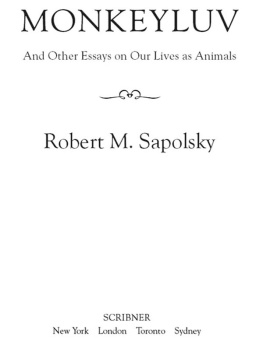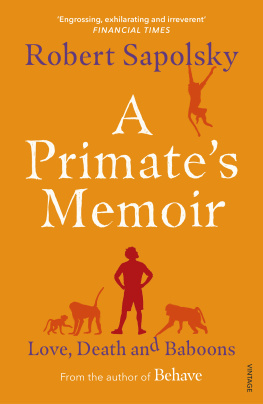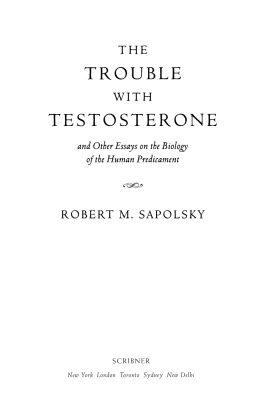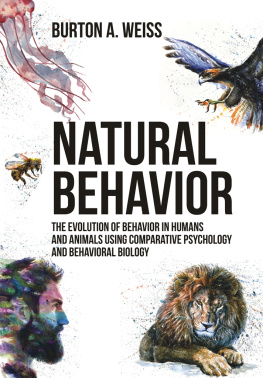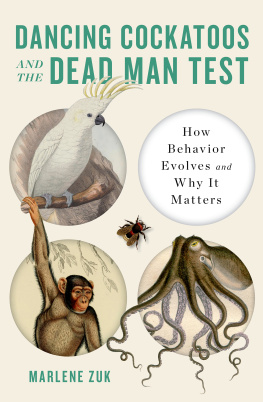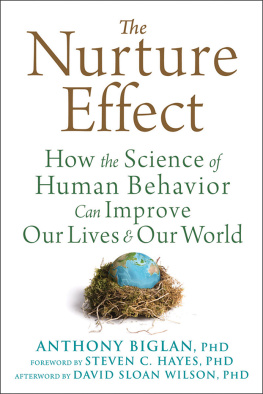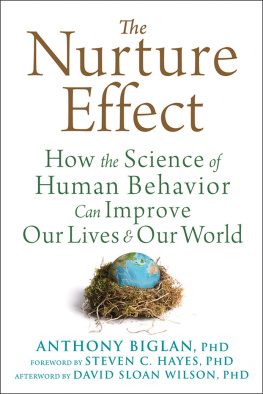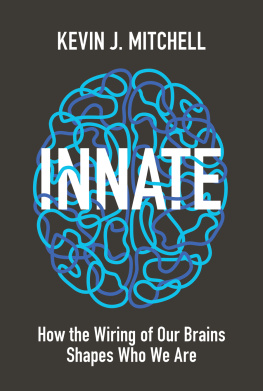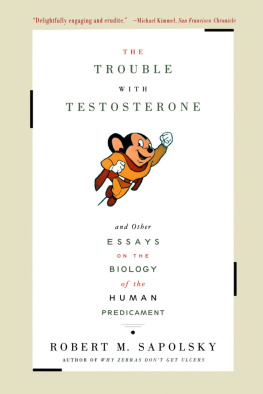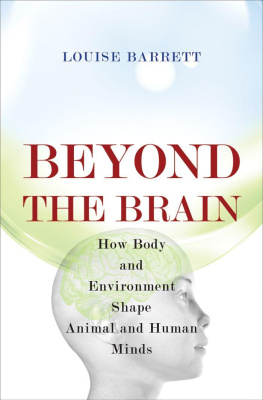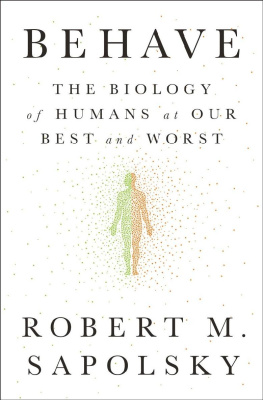Acknowledgments
As noted, all of the pieces in this collection were originally published individually, in substantially similar form to whats presented here, in various magazines. A terrific consequence of this was that, in the process, Ive gotten to work with some of the best editors in the business. And thus I thank Burkhard Bilger, Peter Brown, Alan Burdich, Jeff Csatari, Henry Finder, David Grogan, Marguerite Holloway, Emily Laber, Vittorio Maestro, Peter Moore, John Rennie, Rickie Rusting, Polly Schulman, and Gary Stix for their patience and skill in dealing with someone who should probably have been forced to take some English classes in college. Turning these individual articles into this book involved my getting to work with Colin Harrison and Sarah Knight at Scribnerit has been a pleasure to work with you, and I am grateful for your help in making it seem like these disparate pieces were actually meant to form a coherent whole. I thank my agent, Katinka Matsonthis is our third book together, and she continues to be a great advocate and a wonderful judge of writing. Library assistance was provided by Kelly Parker and Lisa Pereira, and funds from the Bing Award and from the Hoagland Prize made it possible for me to initially ruminate over and eventually fulminate about these various topics.
Part I
Genes and Who We Are
A s a scientist doing scads of important research, I am busy, very busy. What with all those midnight experiments in the lab, all that eureka-ing, I hardly have any time to read the journals. Nonetheless, I stopped everything to thoroughly study the May 10, 1999, issue of People magazine, the special double issue, The 50 Most Beautiful People in the World. It was fabulous. In addition to the full-color spreads and helpful grooming tips, the editors of People have gone after one of the central, pressing issues of our time. Nature or nurture? they ask on the opening page, as in, What gets you in our special issue? About beauty, the arguments can be endless ( P. Mag. [1999] 51, 81). Best of all, the write-ups on each of the fifty contain some thoughts from the Chosen Ones or from members of their entourage (significant other, mom, hairdresser) as to whether their celebrated states are a product of genes or environment.
Now, one should hardly be surprised at the range of answers that would come from a group that includes both a seventeen-year-old singer named Britney Spears and Tom Brokaw. What was striking, though, and, frankly, disappointing to this reporter was that our Fifty Most Beautiful and their inner circles harbor some rather militant ideologues in the realm of the nature/nurture debate.
Consider first the extreme environmentalists, who reject the notion of anything being biologically fixed, with everything, instead, infinitely malleable with the right environmental intervention. Theres Ben Affleck, newly arrived on the movie scene in the last few years, who discusses the impact of his pumping iron and getting his teeth capped. Oh my God, you are a movie star! one of his advisers is reported to have gushed in response to the dentistry ( P. Mag. [1999] 51, 105). Mr. Affleck is clearly a disciple of John Watson, famous for the behaviorist/environmentalist credo, Give me a child and let me control the total environment in which he is raised, and I will turn him into whatever I wish. It is unclear whether Mr. Watsons environmentalist hegemony included turning people into the Fifty Most with cosmetic dentistry, but a torch appears to have been passed to young Mr. Affleck. Thus, it hardly becomes surprising that Mr. Afflecks much celebrated affair with Gwyneth Paltrow, clearly of the genetic determinist school (see below), was so short-lived.
A strongly environmentalist viewpoint is also advanced by one Jenna Elfman, apparently a successful television star, who attributes her beauty to drinking one hundred ounces of water a day, following the teachings of a book that prescribes diets based on your blood type, and religiously making use of a moisturizer that costs $1,000 a pound. However, even a neophyte in the studies of human developmental biology and anatomy could quickly note that no amount of said moisturizer would result in the inclusion on People s list of Walter Matthau or, say, me.
Then there is Jaclyn Smith, having moved into the stage of life where People mostly exclaims over the extent to which she still looks like the Charlies Angel that she once was, explaining how her beauty has been preserved with good habitsnot smoking, drinking, or doing drugs. This seems reasonable, until one reflects that that salutary nurturing of her self couldnt quite be the whole story, since no similarly ascetic Amish appears on the list of fifty. (A close friend of Ms. Smiths countered that her beauty is, in fact, maintained by her humor, honesty, and unpretentiousness [ P. Mag. (1999) 51, 98], which left this reporter sincerely confused as to whether that should count as nature, nurture, or what.)
Perhaps the most extreme stance of this band is advanced by the actress Sandra Bullock, claiming that her beauty is all smoke and mirrors ( P. Mag. [1999] 51, 81), a viewpoint that aligns her squarely with the Lysenkoism of the Soviet wheat experiments of the 1930s. One need merely to examine her workfor example, the scene in which she first takes the wheel of the bus in Speed to detect the undercurrents of this radicalism in her oeuvre.

